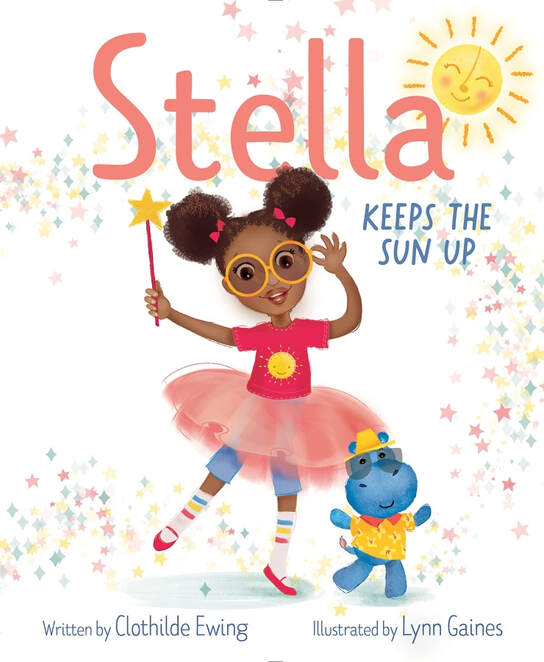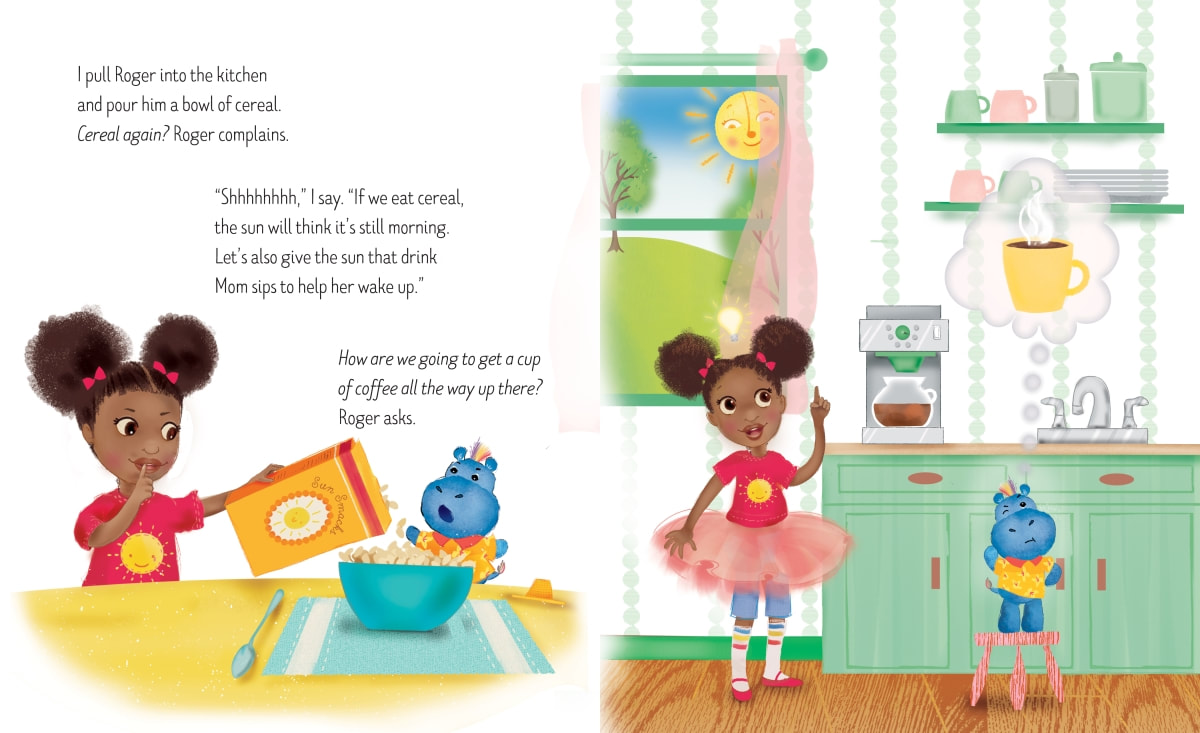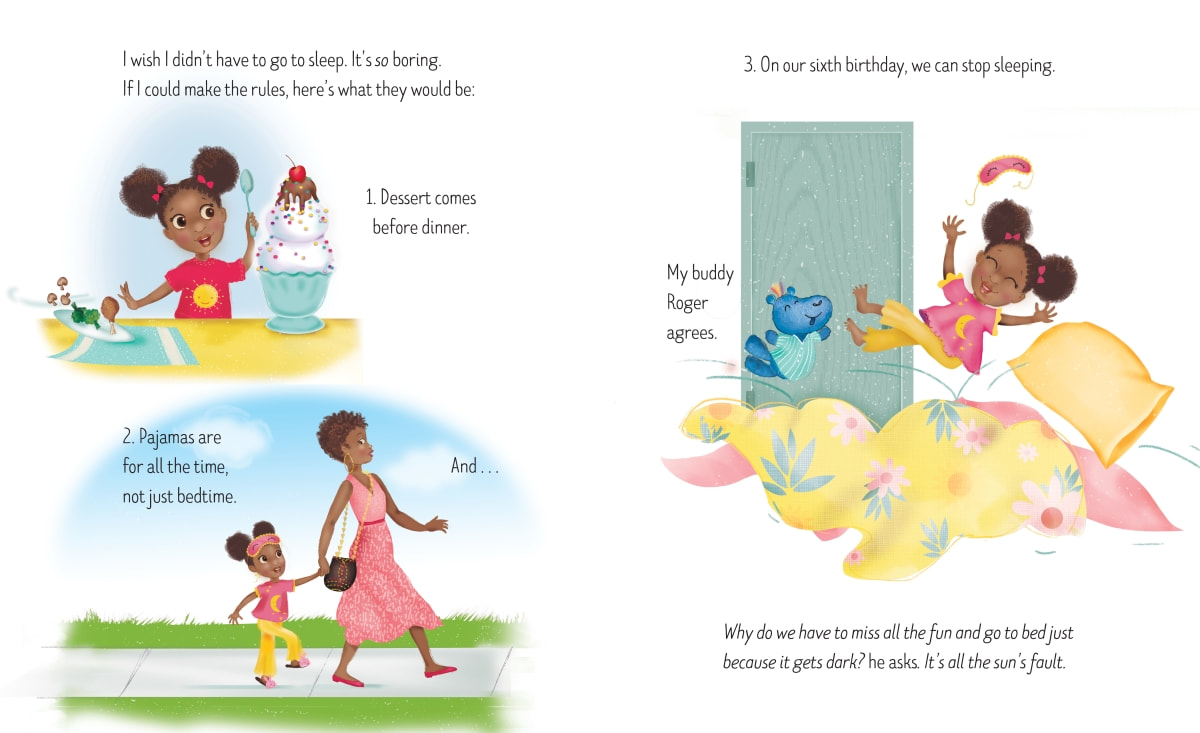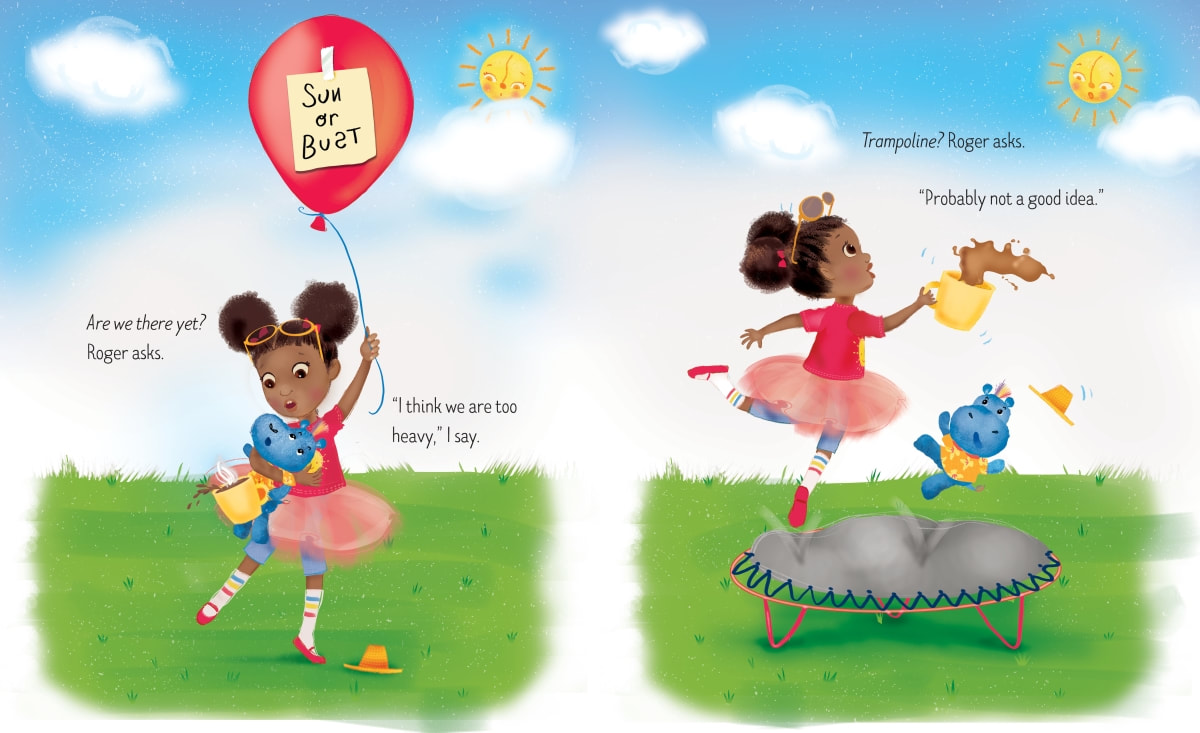|
Interview By: Tonya Abari TA: How did you birth this beautiful story, Stella Keeps the Sun Up? We want juicy details. Does art imitate life? Did this story come to you in a coffee shop or dream? Fill us in! CE: First, let me say thank you. I am so happy you enjoyed it. There were so many iterations of this book…picture book, chapter book, dream sequences, but I loved the idea of exploring a story about sleep. I’ve been lucky throughout this process to work with a critique group through SCBWI and workshop different ideas with my own family and fellow parents in the trenches. And, this felt like the perfect first story to explore. The bedtime struggle is real in our house. I have memories of sleep training, sleep regression and more recently trying everything from refusing entry into our bed and having our kids sleep on the floor to bribing them with promises of movies or Lego sets if they sleep in their bed uninterrupted for 30 straight days. Right when we think we have it figured out, things change. One thing that seems consistent is that neither of our kids seem particularly phased that their parents are sleep deprived! TA: Stella, the book’s narrator, has such a strong and relatable voice. What inspired you to write the story Stella Keeps the Sun Up in first person? To expand on this question, why do you think it’s important to consider point of view in picture books? CE: My children go to a Montessori school and one of the greatest lessons we have learned as parents is how capable our children are – this is true when it comes to using actual glassware at 3-years-old, getting dressed by themselves at a young age, but also in expressing themselves and their desires. I really wanted to write a story that honored a child’s voice and agency. So often we talk past children, assuming that an adult is better equipped to speak on their behalf. I recall a recent trip to the grocery store and my seven-year-old daughter was practicing ordering from the deli counter. After she placed her order, the person she spoke to confirmed her order with me. I noticed what happened, but more importantly she noticed and wondered why the person didn’t speak to her instead. While there are many picture books that I love that are in the third person for most of the storytelling, it was important for me to celebrate this joyful, little Black girl’s voice. TA: The illustrations of Stella are so vibrant and joyful. I love how even her clothes (tee shirt with sun, cute afro puffs) really reflect her personality. Did you have any input on the details of this artwork? CE: Lynn Gaines did an amazing job! I am so lucky to have had the opportunity to work with her. The one thing that was important to me was that there was no ambiguity about her race. While we are beautiful shades of brown, I was inspired by my desire to bring mirrors to my children and so I very much wanted to see Stella a deep brown. While we did speak early on about how I envisioned Stella, I will give her all the credit. The fact that she is wearing a tutu AND athletic tube socks, with slippers is spot on. Stella exudes joy and such comfort in her own skin. She marches to her own beat and seeing her on the page makes me smile each and every time. TA: We love Stella’s fun new rules. Who wouldn’t enjoy dessert before dinner?! How important is it for parents to encourage this free-spirited inquisitiveness? CE: I had a great childhood, but am also part of the generation where our parents could more easily answer a question with “because I said so.” That doesn’t fly as easily with our children. They want to know the steps that got us to a particular answer and are often ready to express an alternate point of view, which can help justify why ice cream, which is made from milk for example, would make a great pre-dinner appetizer. There is a lot we can learn from them and frankly some of it involves getting back in touch with the “I can do anything” attitude. I often find myself in awe in conversations or in observation of my own children as they work to figure out the world on their terms. They don’t subscribe to the same rules that dictate why or how things are done. Some of that is because they don’t know them yet, but some of it is also because they don’t care. That innocence can be really freeing. TA: Stella shows great emotion throughout the entire book. What advice would you give to a new picture book author who is crafting an emotional arc for their main character? CE: Remember to have fun and to not let the perfect be the enemy of the good as you get started. Even if you want your book to have a certain feel, be a certain length or word count, put it all out there and see what is working along the way. You will have plenty of opportunity to make cuts as you move along. Have fun with characters and voice and be ok with the idea that your final draft may look nothing like your first. If this is for a picture book for children, try to honor a child’s voice and perspective. Big feelings for example are ok sometimes and age appropriate. I have also found it helpful to set an intention for my stories and then to try and figure out how to see that through a child’s eyes. TA: You dedicated this book to your village as well as your children. Parent writers often find inspiration from their own children. Can you elaborate on how your own children awakened your sense of innocence and adventure? And do you have any advice on how parent writers can tap into these senses if writing for children? CE: I was looking through my writing journal recently and so many of my notes came from offhanded conversations with my children and my wonder at their kid logic in action. Oftentimes, we as adults, have a tendency to overcomplicate things. It’s not always that deep. One of the blessings of the pandemic for my family was being forced to slow things down. While the various lockdowns have been challenging for different reasons, we also managed to have a lot of fun doing simple things like building forts with pillow cushions, going on scavenger hunts around our neighborhood, taking out the old polaroid camera, seeing firsthand how yeast works and how to make our own slime. There can be wonder in what we so often take for granted. There can be stories in those chance adventures and dialogues. TA: We all know that publishing is very top secret, but can you give us the scoop – or at least a subtle hint – on what you’re working on next? CE: I feel so grateful to Denene Millner and the Simon & Schuster team who saw promise in Stella and who committed to making her a series. My children loved reading the Eloise and Fancy Nancy series and the fact that I can be a part of bringing Stella, a character that looks like them into the world is so exciting. Our next book is about Stella and Roger’s hunt for a missing tooth and I have a few more up my sleeve that I can’t wait to share with the team. Clothilde Ewing has spent her career communicating through journalism as an assignment editor and producer at CBS News and as a producer at The Oprah Winfrey Show, through politics as a member of the press team for President Obama’s 2012 reelection campaign, and with nonprofits, where she currently leads communications efforts at The Chicago Community Trust. She was inspired to write the Stella series, after reading a New York Times opinion piece by her now-editor, Denene Millner, titled: “Black Kids Don’t Want to Read About Harriet Tubman All the Time.” Her goal is for children, whether they look like hers or not, to see children of color in books that have nothing to do with race or struggle and have everything to do with belonging and joy. A graduate of Syracuse University’s SI Newhouse School of Communications, she currently lives in Chicago with her husband and two young children.
Website: clothildeewing.com Twitter: @clo_ewing Instagram: clothildeewing Comments are closed.
|
Archives
July 2024
Categories
All
|





 RSS Feed
RSS Feed



